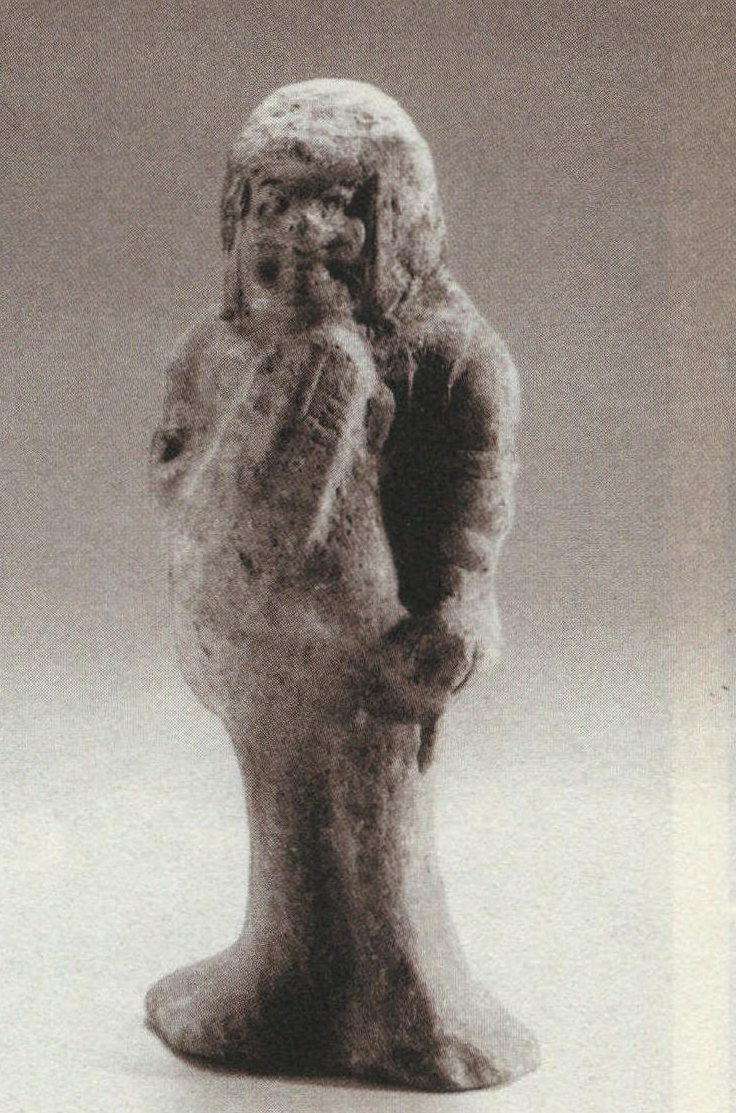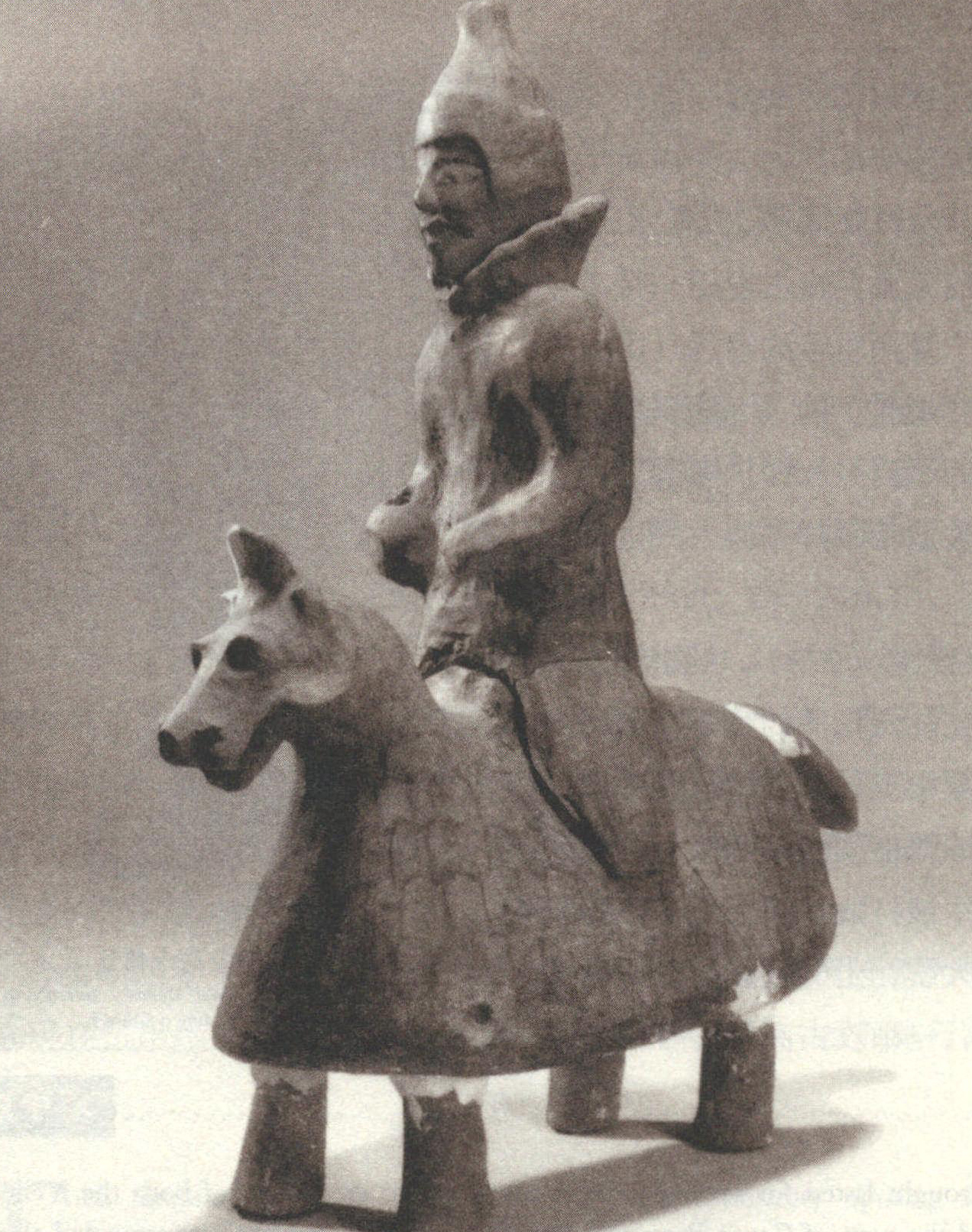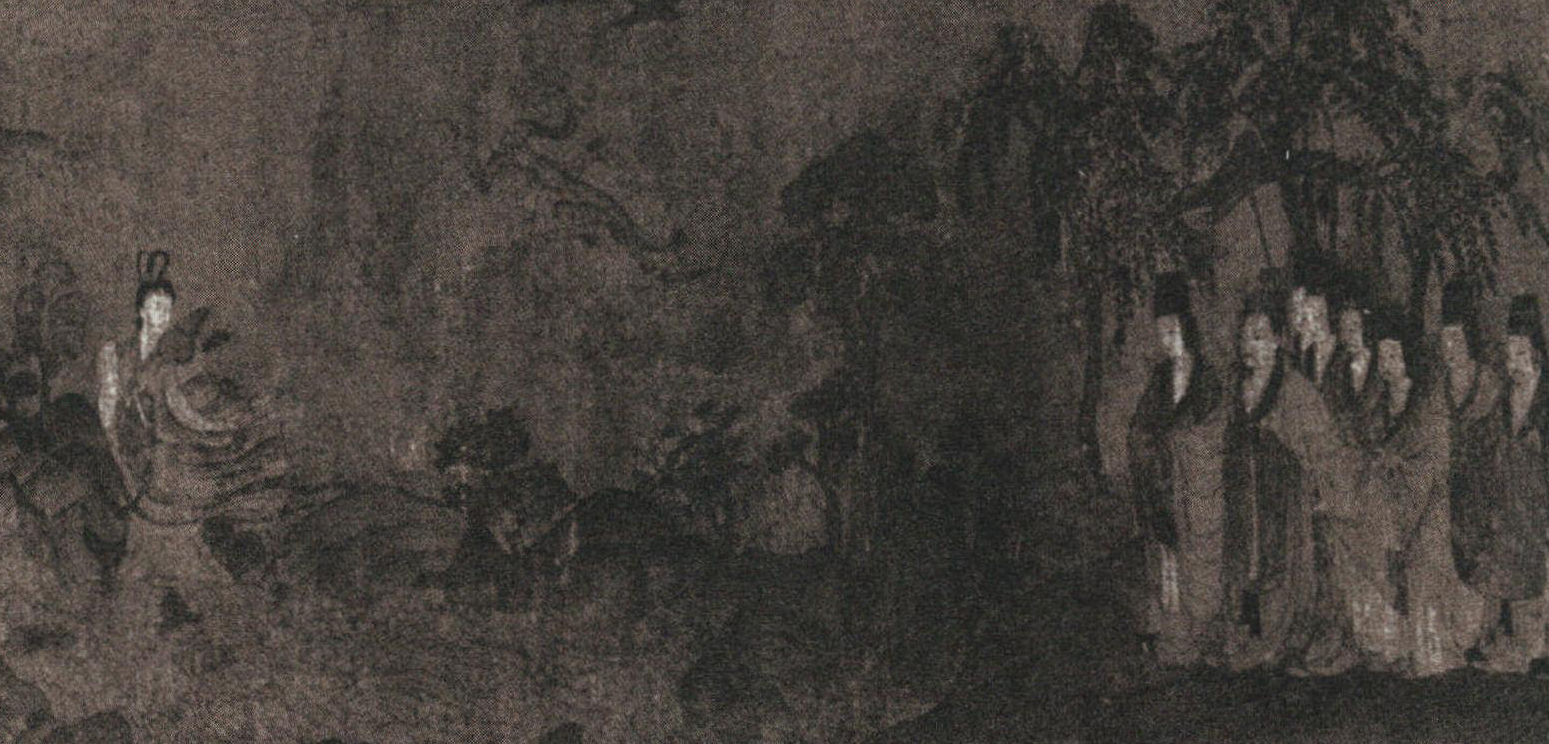秃发树机能 (? ~279),西晋鲜卑族起义首领。“河西鲜卑”秃发部首领匹孤四世孙,他在祖父寿阗死后接替大首领位置。鲜卑族原居牧于今内蒙古自治区东北部额尔古纳河以南至西拉木伦河以北地区。后来部落渐渐繁衍,势力日益强大,便不断向西移动,到了东汉初,已经散布于河西地区 (今宁夏北部至甘肃河西走廊地区)。在今宁夏地区活动过的鲜卑族先后有乞伏部、鹿结部、秃发部。魏晋时期,内迁的各少数民族往往被统治阶级视为 “非我族类,其心必异”而备受欺压与盘剥。地方官员 “或以狙诈,侵侮边夷; 或干赏啖利,妄加讨戮” ,因而各少数民族的反抗怒火犹如干柴烈火,一触即发。
晋泰始四年~五年 (268~269)间,河西、陇西地区连年大旱,各族人民在饥饿线上挣扎,朝廷不但不进行安抚和救济,反而施行高压手段。新任秦州刺史胡烈一上任,就对少数民族使用武力,先屯兵于高平川 (今宁夏固原市清水河流域) ,后又派兵进占麦田一带 (今甘肃、宁夏两省区的靖远、中卫两县市交界地区)的 “河西鲜卑”聚居地。为了自卫和保护家园,秃发树机能被迫带领鲜卑族人民进行武装反抗。

北魏持刀武士俑1
Northern Wei Dynasty terrracotta Warrior Holding a Sabre Ⅰ

北魏持刀武士俑2
Northern Wei Dynasty terrracotta Warrior Holding a Sabre Ⅱ
泰始六年 (270),树机能率鲜卑部众与胡烈指挥的官军在万斛堆(今宁夏中卫与甘肃靖远交界地区黄河北岸腾格里沙漠南缘)进行恶战,官军被打败,胡烈毙命。树机能军威大震,士气旺盛,便乘胜率众南下,一举攻占高平 (今宁夏固原市原州区)。晋武帝司马炎再派杜预为秦州刺史,命尚书石鉴为安西将军,率大军西征。但是西晋、鲜卑两军经过长达一年时间的交战,官军不仅没有消灭树机能,反而引起今陕甘宁境内的各少数民族纷纷加入反晋的斗争中去,尤其是以原被安置在安定郡的“北地胡”所组建的一支匈奴军队战斗力最强。各民族的军队相互配合,并肩战斗,一举攻占了金城郡(今甘肃兰州),阵斩凉州 (今甘肃武威)刺史牵弘,使得北边的凉州、南边的秦州 (今甘肃天水)等战略要地都被民族军控制。晋廷朝野大为震动,晋武帝 “每虑斯难,忘寝与食” 。咸宁元年 (275),树机能又乘胜率众向金城和凉州以西的广大少数民族区域发展。晋廷更加惊恐,深怕这支火把会燃起西部少数民族更大范围和更加猛烈的反抗烈焰。咸宁三年 (277),树机能军在镇西将军、汝阴王司马骏,平虏护军文俶和凉、秦、雍各州数路大军的围攻下,遭到重创,斗争走进低谷。
咸宁四年 (278),树机能部将若罗拔能重新组织力量,再次率领鲜卑和羌胡各少数民族军大举进攻凉州,并阵斩刺史杨欣,第二次占领河西重镇凉州,引起晋廷朝野的一片恐慌。晋武帝临朝时叹息道: “谁能为我讨此虏通凉州者乎! ” 当即任命自动请战的马隆充当讨虏护军、凉州刺史。马隆选精兵三千五百名,配发精锐武器,自带三年给养,向河西地区杀奔。马隆军在当年年底到达凉州地区,先诱抚了树机能部将拔韩、且万能等人,致使一万多民族军不战而降; 然后再强迫投降的民族军去攻打树机能,并在混战中杀死了树机能。民族军群龙无首,或死或降或逃,树机能所领导的西北各族人民的反晋斗争,历时十年终告失败。

顾恺之《洛神赋图》(部分)
Ode to Luo God(Part) by Gu Kaizhi
Tufa Shujineng(?-279) was head ofXianbei nationality uprisingarmyinWestern Jin Dynasty (A.D. 265-317). He was one of the forth generation'sgrandsons of Pigu,leader of Tufa tribe of "Xianbei to the west of the YellowRiver". After the death of his grandfather Shoutian,Tufa Shujineng mounted the throne. Xianbei people had originally lived and grazed their horses and sheep in the area between the E'erguna River and the Xilamulun River (in the northeast of Inner Mongolia today). Afterwards,the tribe increased gradually in population and power. It began to move westward. At the beginning of the Eastern Han Dynasty (A.D.25-220),this tribe spread to the areas to the west of the Yellow River (present-day areas between the north of Ningxia and Hexi Corridor). Qifu,Lujie,and Tufa tribes of Xianbei nationality had lived in present-day Ningxia successively. In the Kingdom of Wei and Jin Dynasty,immigratory minority people were always viewed as "those of a different race who cannot be loyal to us" and were therefore oppressed and exploited by the ruling class. Local officials either "insulted and invaded them by way of cheating,or slaughtered minority people in a large number for interests and rewards from their immediate superiors". Therefore,resistance simmered at every moment.
During the fourth and fifth years of the Taishi reign of Jin Dynasty (A.D.268-269),a great drought lasted for several years running in the west areas of both the Yellow River and the west of Gansu Province. People of different nationalities struggled along on the verge of starvation. Instead of placating and relieving the disaster victims,the imperial government enacted a high-handed policy. For example,after assuming office,Hu Lie,governor of Qinzhou Prefecture resorted to force to the minority people. He stationed troops at Gaoping area (present-day Qingshui River valley in Guyuan,Ningxia),and then he sent troops to occupy the region of Maitian (present-day bordering area between Jingyuan in Gansu and Zhongwei in Ningxia),where the Xianbei people lived in a compact community. For self-defence and homeland protecting,Tufa Shujineng was forced to lead Xianbei people to wage an armed resistance.
In the sixth year of the Taishi reign of Emperor Wu (270 A.D.),Shujineng ledXianbei tribes to fight fiercely with the government troops led by Hu Lie at Wanhudui(present-day south edge of Tengeli Desert in the north bank of the Yellow River,i.e.the bordering area between Zhongwei,Ningxia and Jinyuan,Gansu). Finally,the government troops were defeated and Hu Lie was killed. In contrast,the prestige of Shujineng's troops was made felt and the morale of his soldiers was boosted. Then heled his troops to fight southward and occupied Gaoping (present-day Yuanzhou District of Guyuan,Ningxia) at one blow. Emperor Wu Sima Yan of Jin Dynasty appointed Du Yu as governor of Qinzhou District and imperial secretary Shi Jian as general to go on a punitive expedition to the west. After one year's war between Jin and Xianbei troops,the government troops did not annihilate Shujineng and his troops,but led more and more minority people (in present-day Shaanxi,Gansu and Ningxia) to join in the war against the reign of Jin Dynasty. Among those troops,one Xiongnu troop distinguished itself for its high combat effectiveness,which was composed of"Beidihu" settled down in An'ding Prefecture. The troops of different nationalities cooperated with each other and fought shoulder to shoulder,conquering Jincheng Prefecture (present-day Lanzhou,Gansu) and killed Qian Hong,governor ofLiangzhou District (present-day Wuwei,Gansu Province). Thus,some strategically important areas like Liangzhou District in the north and Qinzhou District in the south(present-day Tianshui,Gansu) came under the control of minority troops. The imperial government was shocked at their failure. It was said that Emperor Wu of Jin Dynasty did not fail to forget sleeping and eating each moment he thought of the failure.Following up the victory,in the first year of the Xianning reign (275 A.D.),Shujineng led his troops to expand westward to the west area of Jincheng and Liangzhou. The Jin government was afraid that the "The spark of revolt" would develop into a more fierce fire among the minority people in the western region. In the third year of the Xianning reign (277 A.D.),Shujineng's troops suffered heavy losses under a joint attack from troops led by General and Yingru Duke Sima Jun and Hujun Wen Shu and the troops sent from Liangzhou,Qinzhou and Yongzhou. Then,the uprising entered into its lowebb.
In the fourth year of the Xianning reign (278 A.D.),Ruoluo Baneng,a military officer under Shujineng's command,reorganized a troop of Xianbei and Qiang people and launched an attack on Liangzhou. He killed Yang Xin,governor of Liangz hou on the battlefield and his troop occupied Liangzhou for a second time,which scared the Jingovernment greatly. In the court,Emperor Wu of the Jin Dynasty sighed,"Who on earth can fight against the enemy and recover Liangzhou for me?"Then he appointed Ma Long as general suppressing the enemy and governor of Liangzhou District as soon as Ma asked for a battle assignment. Ma Long picked out a crack troop of 3500 soldiers,allocated them with weapons and provisions for three years to come and rushed them to the west of the Yellow River. Malong's troop arrived at Liangzhou at the end of the same year. Firstly,he induced Shujineng's military officers Bahan,Qiewangneng to surrender,which led 10000 minority soldiers to surrender without any resistance. Then,he forced the surrendered nationality troops to attack Shujineng and Shujineng was killed in the battle. Without a leader,many minority soldiers were killed and some others surrendered or ran away. Thus,the 10-year-long war against the reign of Jin Dynasty waged by northwestern minority people ended in failure.Ⓔ
本文地址: https://www.yishiweijian.com/renwu/2022123801.html
文章来源:主编
版权声明:除非特别标注,否则均为本站原创文章,转载时请以链接形式注明文章出处。
2023-02-15主编
2023-02-15主编
2023-02-15主编
2023-02-15主编
2023-02-15主编
2023-02-15主编
2023-02-15主编
2023-02-15主编
2023-02-15主编
2023-02-15主编
2022-11-29主编
2022-11-29主编
2022-11-23主编
2022-11-18主编
2022-12-08主编
2022-12-08主编
2022-12-02主编
2022-11-29主编
2022-11-29主编
2023-01-03主编
2023-01-15主编
2023-01-04主编
2023-01-04主编
2023-01-04主编
2023-01-07主编
2023-01-20主编
2023-01-07主编
2023-01-04主编
2023-01-04主编
2023-01-07主编
扫码二维码
获取最新动态
